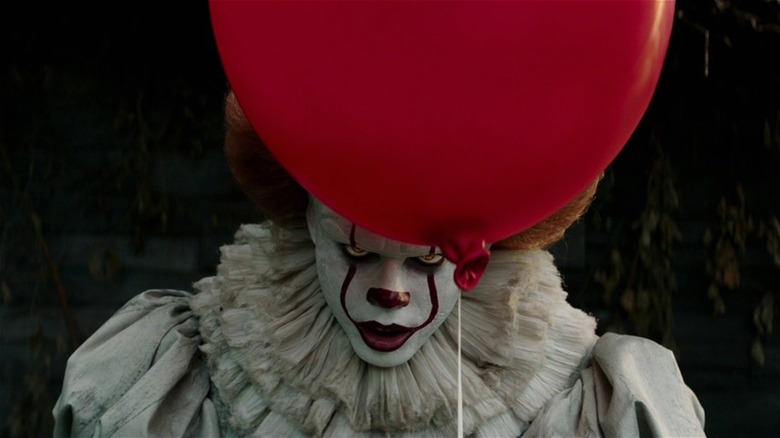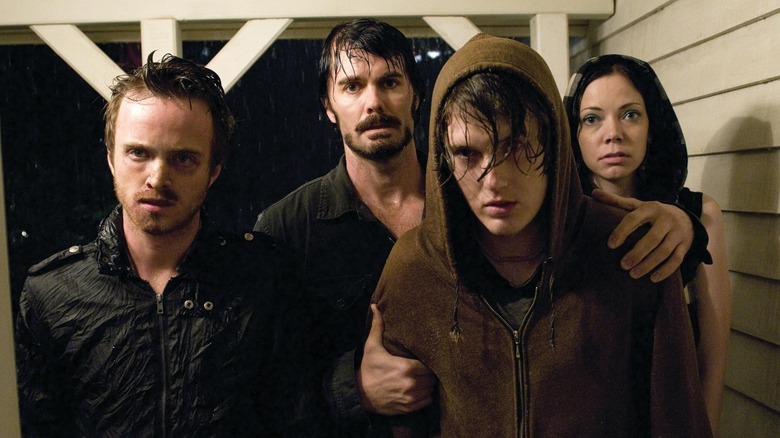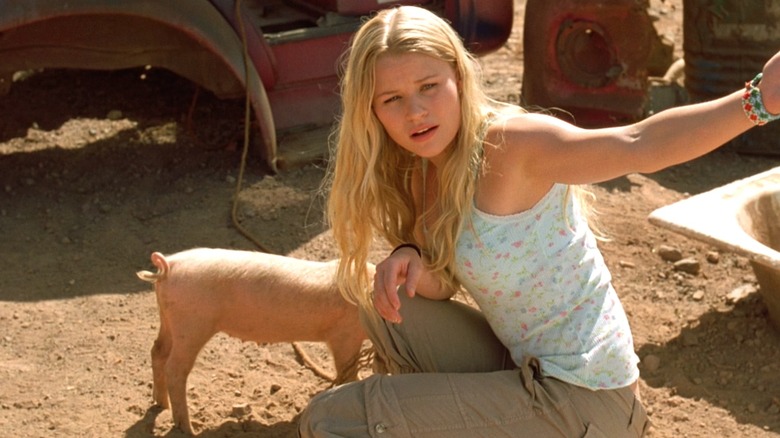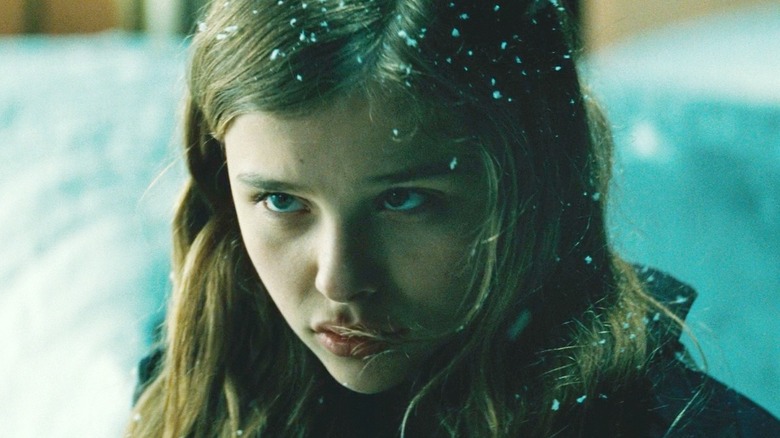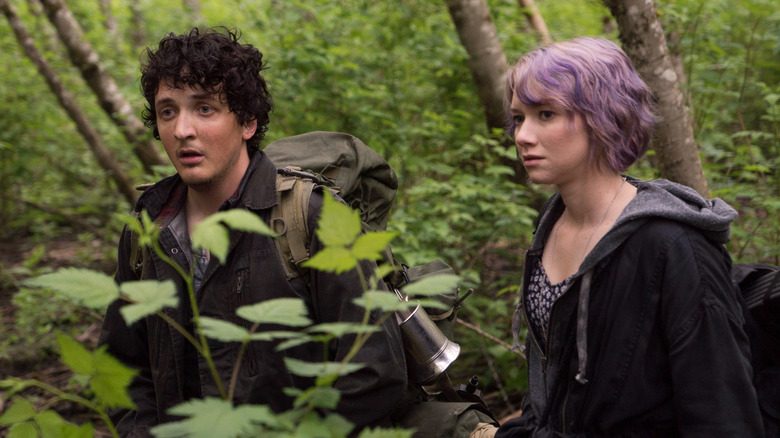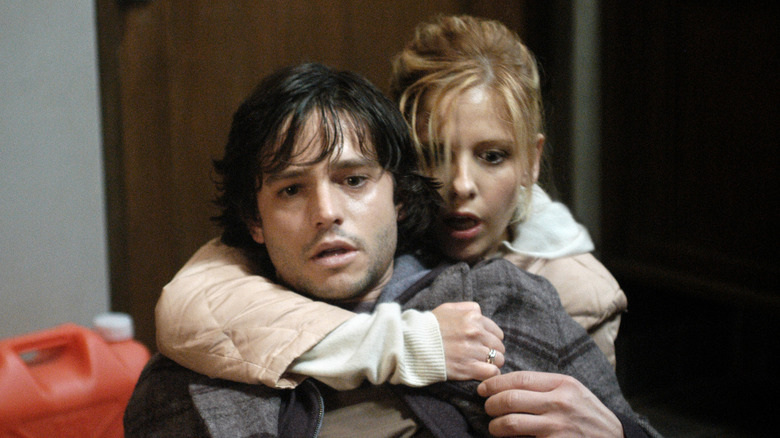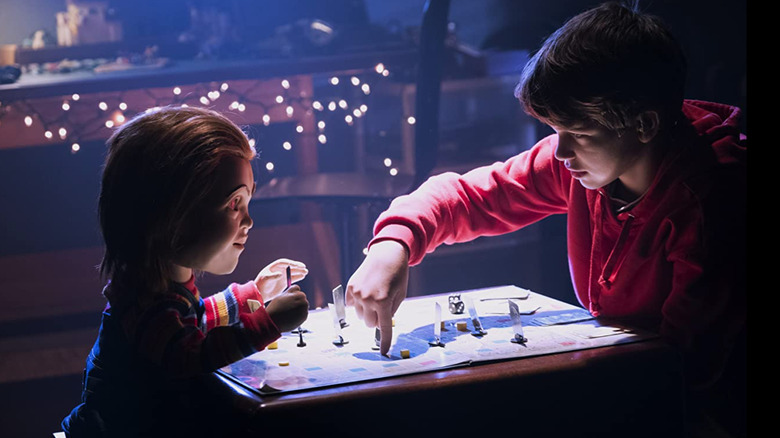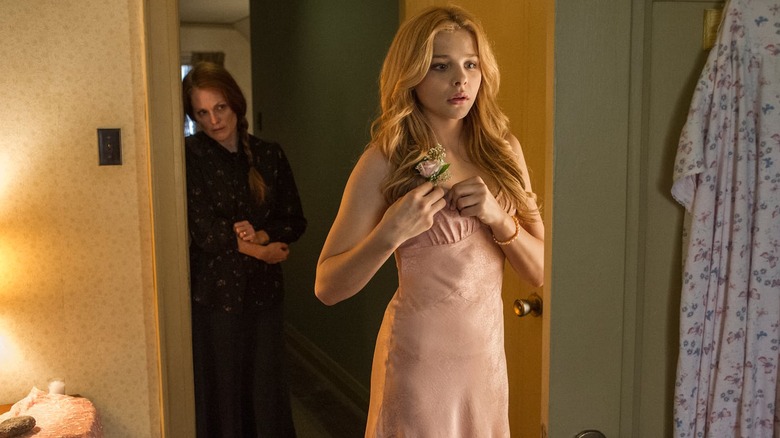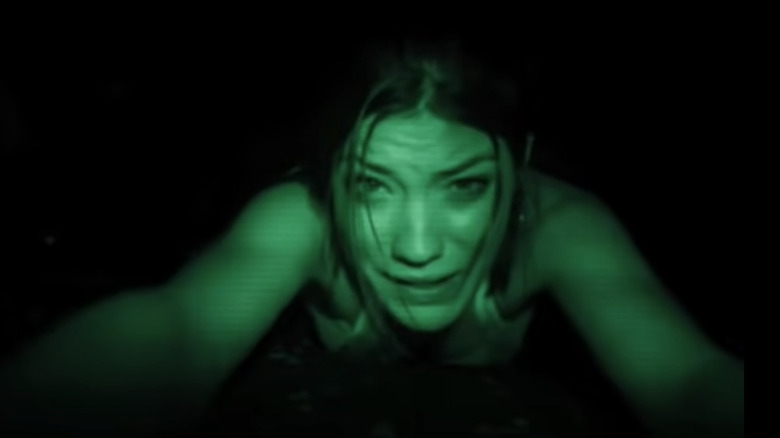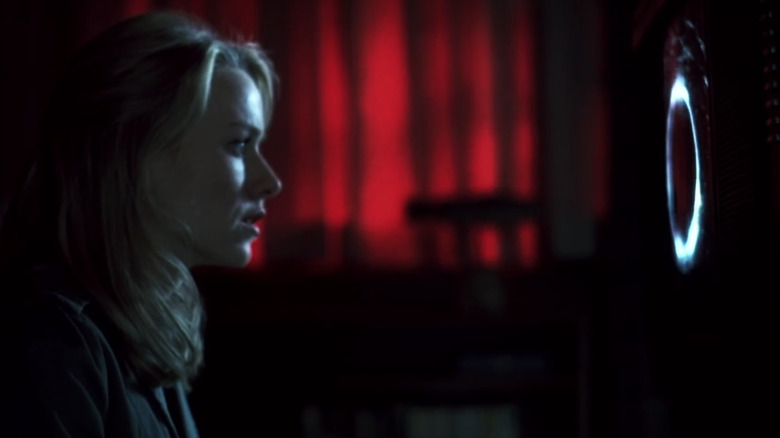The 12 Best Horror Movie Remakes From The 2000s
In our seemingly never-ending wave of reboots and reimaginings, one genre often gets the remake treatment more than others: Horror has a deep well of material from the earliest days of cinema that inspires filmmakers so deeply, they feel compelled to create their own iteration of these beloved tales. Sometimes, these new installments are met with open arms by enthusiastic horror fans whereas other times, they divide the community like the experimental and subversive "Halloween Ends."
This divisive element can make a film even more exciting as it takes unconventional risks with the existing story. However in other instances, as filmmaking techniques progress and more innovative technologies emerge, this refreshing upgrade can enhance the chilling adventure with a modern touch. Either way, curiosity usually takes hold inviting blood-lusting horror fans in for another scare.
The iconic nature of masked menaces like Michael Myers and Ghostface allows room for reinvention when it comes to bringing back these seemingly invincible killers. The booming horror market has seen a stunning renaissance over the 2000s (as Medium notes) leading to outstanding originals like "Pearl" and "Nope." As another Halloween comes and goes, we've compiled a spooky selection of the best modern horror remakes for a frightening watch.
The Last House on the Left (2009)
Before legendary horror innovator Wes Craven sharpened his knives with Freddy Kreuger in "A Nightmare on Elm Street" (1984) or Ghostface in "Scream" (1996), he unleashed a shocking revenge thriller with 1972's "The Last House on the Left." As this twisted tale unfolds, the film feels like a reflective response to the counterculture movement of the 1960s to '70s, which saw younger generations rebelling through drugs and rock 'n roll. "The Last House on the Left" follows two young all-American girls seeking a risky adventure who end up finding much more than they bargained for when they cross paths with four fugitive killers.
In 2009's gripping remake, director Dennis Iliadis enlists Sara Paxton and Aaron Paul (during his early days on "Breaking Bad") to retell this spine-tingling interpretation. This is one of the many contemporary horror revisions that utilizes technological advancements to brutally execute its victims. A prime example of this is a harrowing sequence with Aaron Paul's Francis and a ravenous garbage disposal. The scene turns a home into a battlefield as Mari's (Paxton) parents learn their nighttime visitors are actually their daughter's vicious attackers, inciting the passionate bloodlust for revenge.
The Hills Have Eyes (2006)
Perhaps one of the hardest to stomach on this horrifying list, 2006's "The Hills Have Eyes" reboot has several disturbing scenes that will scar fragile viewers and delight hardcore horror fans. The film advertises "the lucky ones die first" in the suspenseful trailer, inviting only the bravest to the radioactive hills of New Mexico's deadly deserts. This new rendition employs astounding prosthetics for a deeply unsettling result that compliments Wes Craven's 1977 original family road misadventure.
2006's "The Hills Have Eyes" takes an optimistic American family road-tripping to sunny San Diego to begin anew and mercilessly rips them apart one by one. They're trapped by a mutated family that refused to leave during the 1945 to 1992 nuclear bombing tests and became contaminated by radioactive fallout. These territorial savages have a gruesome cannibalistic lifestyle, and the entire family finds themselves ensnared in the worst of it during this unforgettable remake.
Let Me In (2010)
Horror's vast international market makes it a sublime genre to draw inspiration from other countries' nightmares. 2010's "Let Me In" reimagines Tomas Alfredson's 2008 Swedish romantic thriller "Let the Right One In," whereub a young bullied boy makes a powerful new friend. In Matt Reeves' American adaptation, undeclared scream queen Chloë Grace Moretz stars as the vampiric Abby who eventually punishes her powerless friends' enemies.
"Let Me In" blends a variety of genres into this horrific narrative with romance and a satisfying revenge thriller element bleeding through in the end. Before Kodi Smit-McPhee was the teleporting blue devil Nightcrawler in the "X-Men" film franchise, he was the small boy Owen who lovingly accepted his monstrous new companion. After spending an unbearable amount of time being tormented by his bullies, Owen meets Abby who turns it all around. She returns his acceptance in a heartwarming exchange after he, as the title suggests, physically and emotionally lets her in.
The bloodthirsty myth of vampires is explored in a unique way by following and subverting an abundance of recognizable folklore. This technique roots the drama in a deeper realism that makes Reeves' world feel more than alive. His directing choices are terrifying in meticulously choosing what gruesome sights we witness visually and which we only hear the grisly sounds from, capped off by Moretz's ghastly performance.
Blair Witch (2016)
The found footage genre was forever changed by 1999's experimental "The Blair Witch Project." This follows a group of unsuspecting film students who document their petrifying encounter with the urban legend of the Blair Witch. The documentary formatting cements "The Blair Witch Project" in the realm of realism with talking heads preceding the inevitable night in the woods.
"The Blair Witch Project" is one of the most successful independent films of all time grossing over $248 million at the global box office (via Box Office Mojo). This outstanding quality led to a willingness to repeat such results with 2016's "Blair Witch," especially after the disappointing sequel, which holds a one star rating on Rotten Tomatoes. Originally falsely titled "The Woods" (via Consequence Film), 2016's "Blair Witch" attempts to both remake and build off the original with the re-quel formula we've seen take hold of franchises like "Scream" and Halloween."
Though it's not as universally despised as 2000's "Book of Shadows: Blair Witch 2," the 2016 feature still puts horror fans at odds with each other. The larger budget and updated special effects give the film a sinister new look with effective moments of shock and gore as the Witch unleashes her fearsome wrath. However, the lack of originality is often what sparks debate as seen on Reddit threads though other fans deeply appreciate the nostalgic call-back to the original.
The Grudge (2004)
The duality seen in Japanese horror films gives them a deeper meaning that often comments on and reflects our modern society. In the original 2002 "Ju-On: The Grudge," a tragedy of violence and sorrow is depicted in a haunting way that is well replicated in the 2004 American remake. Kayako (Takako Fuji) and her young son Toshio (Yuya Ozeki) are ferociously murdered by their husband/father Takeo (Takashi Matsuyama), thereby birthing a supernatural curse or grudge.
Most of the anxiety-inducing scenes in "The Grudge" are composed of an eerie dedication to sound replaying the victim's final moments. Kayako's spirit is forced to forever croak an alarming groan with her broken neck while the drowned Toshio mimics his murdered cat's piercing shriek. These awful sounds are blood-curdling and signal to the audience and unfortunate victims that the threatening forces are looming near.
Sarah Michelle Gellar stars as the courageous nurse Karen who musters up her numerous final girl qualities to uncover the appalling mystery. With Takashi Shimizu's unflinching direction (who, in a rare feat, also directed the original film), Gellar faces off with Kayako and Toshio until she learns that this curse never forgives and it certainly never forgets, even if it has to wait until the equally hair-raising sequel.
Child's Play (2019)
"Child's Play," the 2019 edition, builds off Don Mancini's ingenious premise and adds an all too realistic sentient component that transforms Chucky into a robotic terror. Instead of being possessed by serial killer Charles Lee Ray through a voodoo chant, Chucky is a defective child's companion that manically enjoys violence due to a scorned toy factory worker. He programs Chucky's evil, and the end result is no less morbid than Brad Dourif's foul-mouthed butcherer.
Aubrey Plaza and Brian Tyree Henry give "Child's Play" a surprising emotional depth displaying their characters' ferocity and courage. Plaza plays Andy's (Gabriel Bateman) mother Karen who finally finds the elusive doll at an affordable price following in the footsteps of 1988's original stab-fest. Henry is the investigative officer who finds the trail of bodies leading back to Andy alarming and suspicious until the mind-boggling culprit is revealed.
2019's take on Chucky has some incredibly inventive kills driving home the dangers of hyper-advancing technology with crashing smart cars and slicing drones. Mark Hamill's disquieting vocal performance as the sadistic doll caps off the camp of this iteration exceptionally as he hacks and slashes with a nightmarish glee.
Carrie (2013)
Chloë Grace Moretz teams up with director Kimberly Peirce ("Boys Don't Cry") to unleash unholy hell in 2013's "Carrie." It seems Moretz has a proclivity for eradicating bullies after her eviscerating adventure in "Let Me In," which continues as the telekinetic Carrie White. Based on Stephen King's groundbreaking novel, Peirce teams up with the original writer of Brian De Palma's blood-soaked masterpiece Lawrence D. Cohen for a revitalizing new spectacle.
Moretz portrays White's trauma as the ostracized Carrie immaculately, especially alongside her religiously devout mother Margaret (Julianne Moore). Her performance makes it impossible not to root for Carrie as she deliciously enjoys exacting revenge on her tormentors while fully harnessing her extraordinary powers. Though her victory is short felt, the all-star cast (also including "Halloween" star Judy Greer and "Mr. Robot" star Portia Doubleday) transcend 2013's "Carrie" remake into a powerful retelling that inhabits King's original themes while injecting fresh new ideas in a contemporary update.
Quarantine (2008)
Because of our nation's recent pandemic, this film hits even harder than when it was originally released. Based on 2007's "Rec.," this updated remake arrived only one year after the original. 2008's "Quarantine" follows a bubbly newscaster named Angela (Jennifer Carpenter), who becomes stranded inside an infected apartment building with its array of residents.
The film works on two distressing levels with two distinctive threats: One is the highly contagious disease spreading throughout the apartment building that mutates its victims into a ravenous monster, and the other is the very real Center for Disease Control (CDC) that keeps these citizens locked away like diseased cattle. The combination of these, filtered through the low visibility of the video camera, results in an upsetting experience that now evokes claustrophobic memories of our own lockdowns.
The erratic camera movements embody the best of the 2000s' booming found footage genre encompassing films like "Cloverfield" and "Paranormal Activity." The shock factor of these films remains effective and leaves horror fans anxious and excited for the next ominous point of view.
The Ring (2002)
The overwhelming success of this jarring remake (grossing over $249 million worldwide, according to Box Office Mojo) actually led to the production of "The Grudge," in the same vein of Japanese horror and unshakable curses. "The Ring" stars Naomi Watts as an investigative journalist who comes across an abominable VHS tape that kills the viewer seven days after watching. Watts' star power and Gore Verbinski's intricate directing elevate the horror flick into something more artful that oozes so much dread, viewers feel the curse will latch onto them once the credits roll.
The cursed tape itself is an abhorrent sight with stirring visuals and a bone-chilling sound at a disruptive frequency that puts viewers on the very edge of their seats. Immediately after it ends, the phone alarmingly rings with Samara's (Daveigh Chase) foreboding call warning the watcher that they're doomed to die in seven days. This unique quality gives "The Ring" an unbearable tense element that lingers with audiences as they wait out the dreaded week. "The Ring" builds off the original "Ringu" and its menacing concept that even led to a frightful sequel with Samara's unshakable entity.
Halloween (2007)
Rob Zombie's brutal 2007 version of John Carpenter's suspenseful masterpiece "Halloween" has sparked possibly the most heated debate (as indicated by Reddit) in the entire horror community. Given the iconic nature of "Halloween," it's only natural that the response over Zombie's gory update would be passionate with fans hacked and divided like Michael's poor victims.
Most of this fiery division comes from Zombie's choice to dedicate a large portion of the beginning of "Halloween" to unraveling Michael Myer's tragic childhood. This humanizes the evil Boogeyman which is the splitting detail that some diehard lovers of the original cannot get behind. The humanization of the Shape is a grade too far from Carpenter's indie hit that turns viewers off of Zombie's savage form.
On the other side of this ferocious debate, fans have nothing but overwhelmingly positive comments (see Bloody Disgusting, for example) for Zombie's unfailing commitment to capturing Michael's carnage of blood, guts, and rage-filled slaughters. They also welcome Scout Taylor Compton's raw and emotional performance as Laurie Strode with open arms opposite Danielle Harris' heartfelt Annie Brackett. This talented cast — which also includes Daryl Sabara (of "Spy Kids" fame, in an astonishing change in roles) as Michael's first unlucky kill, Brad Dourif (the voice of Chucky), and Academy Award winner Octavia Spencer (in the even more divisive sequel) — heightens Zombie's signature gritty style, particularly Sheri Moon Zombie as Michael's troubled mother.
Candyman (2021)
Nia DaCosta unites with Oscar-winning screenwriter Jordan Peele for a striking new revival of "Candyman's" hooked-handed butcherings. DaCosta's directorial vision is both elegant and visceral and taunts viewers with what they can't see even more than the blood-soaked executions we do witness. With Peele's outstanding foundation, 2021's "Candyman" dives deep into social themes like gentrification, appropriation, and generational trauma that reflect hard truths about our failing systems.
It wouldn't be Candyman without the iconic horror legend Tony Todd (the original titular buzzing slaughterer and the personification of death in "Final Destination") leading the charge. "Candyman" (2021) explores the traumatizing backstory of Daniel Robitaille (Todd) who was killed for simply being in a consenting interracial relationship (in the 19th century). In DaCosta's new form, we see the first Candyman attempt to snatch a young soul with lurid candies hiding lethal razor blades harking back to the 1992 film.
The corruption of innocence is a reoccurring theme prevalent throughout the film. It grabs hold of standout Yahya Abdul-Mateen II (of HBO's astounding "Watchmen" series and James Wan's "Aquaman") as his character Anthony finds fleeting fame as an artist. His success grows alongside his grotesque physical ailment where his skin rots and decomposes eerily resembling a honeycomb. These troubling sights and malevolent parallels tie DaCosta and Peele's "Candyman" together exceptionally as an unmissable entry.
IT (Chapter 1: 2017, Chapter 2: 2019)
It's only fitting that the film with an original nightmare-inducing mini-series run would result in an even more horrid remake. Andy Muschietti's grim atmosphere is a perfect feeding ground for Pennywise, the child-eating clown (Bill Skarsgård). To cover Stephen King's original colossal book, the first "IT" was a TV mini-series that was cut into a film with a lengthy runtime, clocking in at three hours and 12 minutes.
Muschietti expands on this by dividing "IT" in a clever way by tracking the children in "Chapter 1" and the adults in "Chapter 2." This allows the story to breathe and build even more suspense while Pennywise steals more and more souls from Derry, Maine, in a series of horrific ways. The casting choices add an emotional weight that compels viewers and deeply invests them in the brave defenders of Derry, like Sophia Lillis/Jessica Chastain as Beverly, Fill Wolfhard/Bill Hader as Richie, and Jaeden Martell/James McAvoy as Bill.
With Skarsgård's bewildering performance as Pennywise, "IT" is one of the most pristine adaptations of King's literary works, ushering in an all-new chapter of screen time for the master of horror's stories.
